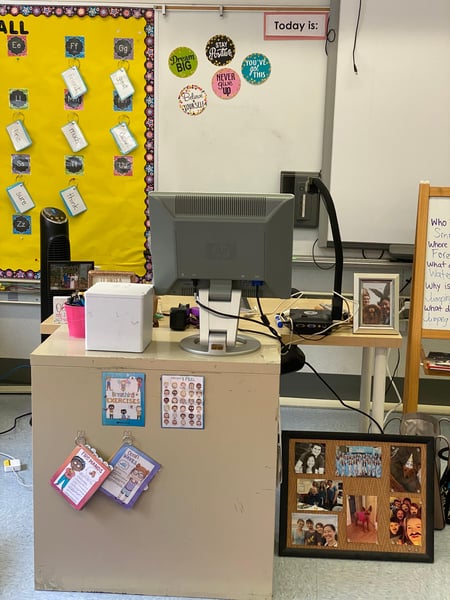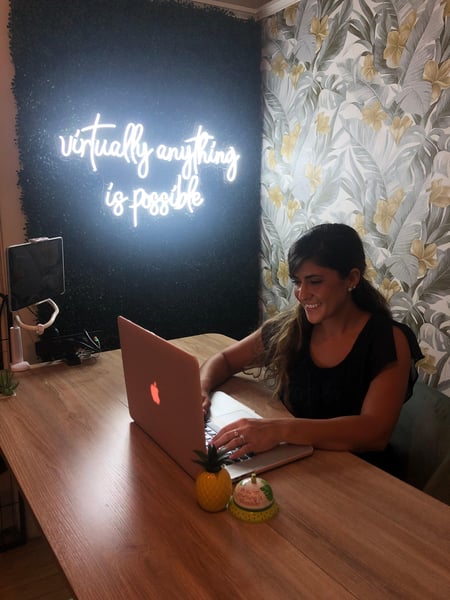Advice from teachers on adjusting to the new normal of distance learning and using tech with students
Gabrielle Nelson, sixth grade teacher at Roosevelt Elementary School in Redwood City, California, learned one thing quickly when school came back this fall: Sixth graders know tech. Whether it’s cutting together videos for presentations or even just connecting easily to the virtual classroom, her students continued to blow her away with their almost innate understanding of technology.
Then she got an email from a student that started with “Bruh, I don’t understand how to…,” and she realized she still had a lot of wisdom to impart.
Brushing up on both tech and life skills
Ms. Nelson took that email as an opportunity to hold a mini-lesson on email etiquette and the difference between professional and personal use of tech tools. It was an unexpected teaching moment that required her to be creative and flexible, and also to figure out how to teach an important life skill to her students.
That kind of flexibility is going to be essential as teachers and students across the country head “back to school,” from home, and dive into distance learning. From unexpected teaching moments to technology glitches to entirely new skill sets, students and teachers are adapting to the new normal of online learning.
Further reading:
6 tried-and-true steps for staying safe online when going back to school
Back to (home) school: Preparing for continued distance learning
Teachers now wear multiple hats
Second grade teacher Felicia Tse has had to be flexible as well — especially with tech. Her classroom uses Google Meet, and she’s finding it has a lot of issues, like not letting students join or freezing unexpectedly.
“There have been a couple times already that I have gone into panic mode, unsure of what to do,” Ms. Tse tells Avast. “Now I’ve come to realize these problems are just a bump in the road. Although there will be issues that arise with distance learning, students are still motivated to learn and enjoy being with their class.”
And while Ms. Nelson is working with digital natives who have been using technology for years, Ms. Tse has the added challenge of teaching younger children, who have had less tech exposure up until now. That means that, in addition to being their regular classroom teacher, she’s also their computer literacy teacher.

Credit: Felicia Tse
“Learning to type on the Chromebook, using educational apps, and becoming familiar with being online almost all day are skills that my students have had to acquire,” Ms. Tse says. “My students didn’t come to second grade knowing how to use a Chromebook, but they’ve learned how to use it quickly. They’ve also adapted to learning how to navigate different educational apps to do asynchronous school work.”
Students aren't the only ones who slip up using tech
In Monica Volz’ fourth grade class, a major tech mixup gave her deeper insight into her students’ character. In the first week of school, she accidentally assigned a few tasks in Google Classroom on the wrong dates and times. When her students pointed out that their assignment was missing, she quickly posted it. However, in her rush to get it up for them, she didn’t realize that she’d allowed them all edit access on the exact same assignment, instead of assigning individual assignments.
“The students were trying to complete their task, but struggled because there were too many students working on one task,” Ms. Volz tells Avast. “I handled this by face-palming myself for a quick second and then smiled and told the students that I am proud of how they handled the chaos. It was a teachable moment to demonstrate to them how mistakes will happen this year, even from their teacher, but I will always stay positive and kind with them and work through my mistakes.”
Her students responded in kind — and kindly.
“They learned more about me with this mistake than they would have if everything went smoothly,” she says. “I was truly impressed with their sweetness and empathy, too, so I learned just as much about them. I knew from that moment we were going to have a great year together.”

Credit: Monica Volz
Positive learnings
And despite the inevitable tech problems, the teachers all agree that distance learning has its silver linings. The biggest one? School districts have been forced into the 21st century.
“Online learning has caused districts to purchase new online platforms and teachers to learn how to utilize these new online platforms in their instruction,” Ms. Nelson says. “Since we’re teaching a tech-savvy generation, these tools create automatic engagement and students are excited.”
But while new tech, quick thinking, and flexibility are all important, there’s one element that’s essential for every successful distance learning classroom: Patience.
“I have asked students to be patient with themselves, with their classmates, with their families, with their teachers and with their technology,” Ms. Nelson says. “No one has done this before and technology is far from perfect. A quote that deeply resonated with me is we are ‘building the plane while we fly it.’ No one can expect perfection. All we can do is try our best — and be patient.”